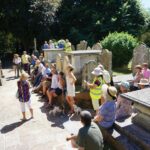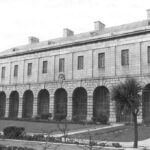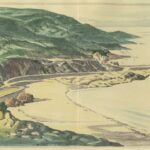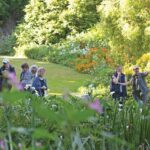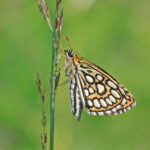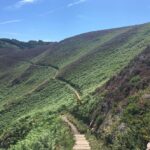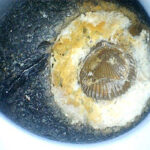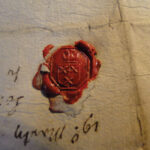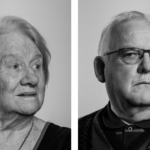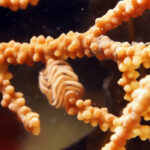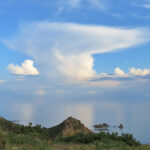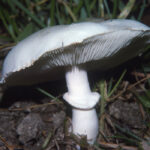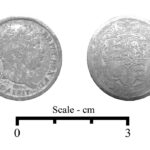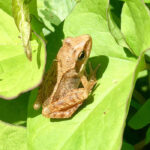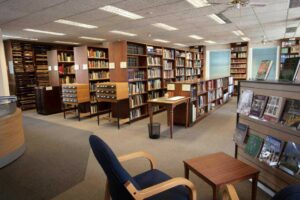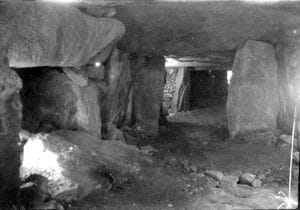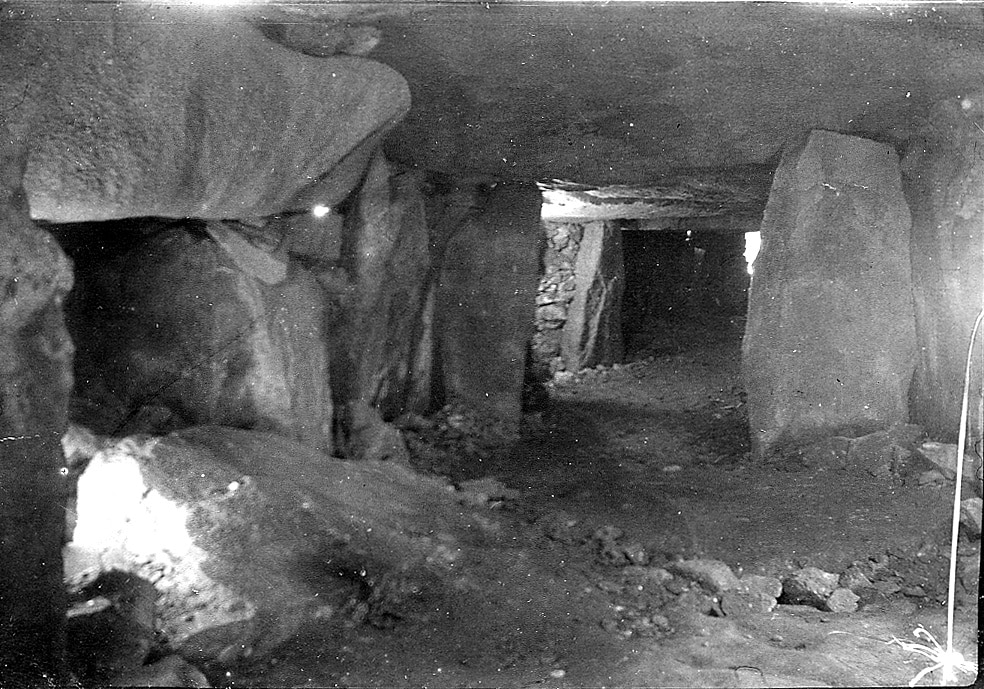An Interview with Archaeology Section Chair Marc Yates
When Marc Yates’ Great Aunt bought him a Société membership when he was a teenager, she likely had no idea he would go onto Chair the very same Archaeology Section that she herself was involved in.
I sat down with Marc to find out about Jersey’s rich archaeological background, why potential undiscovered artefacts aren’t necessarily safe from harm underground and how Islanders can be part of uncovering the answers to some of Jersey’s hidden past.
It was whilst giving guided military history tours of Jersey that Marc’s archaeological interest was piqued by the Megalithic dolmens around the Island. This prompted him to join the Société’s Archaeology Section which he now chairs.
Since he joined, Marc has got involved in archaeological research locally and further afield, including working on a dig in Belgium on a World War One battlefield site.
Speaking about Jersey’s special archaeological background, Marc explained that the Island has “literally layer upon layer of archaeology” from the Palaeolithic era right through to the 20th century and the Occupation of the Island during the Second World War.
“You’ve got all these layers and that’s what’s fascinating that literally wherever you go, you can find the layer; you can probably find several layers. From an archaeological point of view, the fact that it exists is just fabulous, but what’s equally fabulous is a lot of it just hasn’t been discovered.”
During our conversation, it becomes apparent that the archaeological ‘unknowns’ are both a source of delight and frustration for Marc and no doubt others in this field of study. Every archaeological discovery seems to pose further questions in an attempt to piece together a clearer picture about Jersey’s history and the people who have settled here over thousands of years.
However, Marc says that the landscape surrounding key sites of archaeological interest could hold the key to unlocking some of this knowledge. He explains: “What is now becoming much more of a trend in archaeology is looking at the wider landscape and trying to fit all these potentially disparate elements together to try and imagine and discover what the overall landscape was like in any particular period.”
Elaborating on this, particularly in reference to Neolithic archaeology, Marc continued: “The landscape is really important to understand these people and equally, how they adapted to major changes. We talk about climate change now; they were going through periods of climate change as well. They were going through periods where the sea level was still rising.”

This, Marc explained, had a drastic impact on the Island’s geography and footprint: “6,000 years ago, sea level was probably 12 to 15 metres lower than it is now […] so you can imagine how much more land there would have been, certainly down on the South-East corner of the Island and going further towards France.”
All of this, Marc says, helps paint a clearer picture of the lifestyle of the people who settled in Jersey in different eras of early history. Whilst fundamental questions about these communities remain, Marc says: “The more that you can discover about the landscape and the people living in that landscape or how they interact with that landscape, I think the more likely we’re going to be able to inform ourselves and potentially theorise as to what happened and the answers to some of these questions.”
In the face of all the unanswered questions that we have about the past, it would be easy feel comforted that these discoveries are safely ensconced in the ground just waiting to be excavated. But sadly, Marc explains that it’s not quite as simple as that.
“Archaeology is a resource which potentially will disappear. It’s an odd thing […] If you excavate something, basically you destroy it in the process. It’s never going to be the same as it was before you’ve uncovered it. Therefore, there is a presumption not to excavate and in the expectation that techniques and technology will improve which will allow better future interpretation. But equally, sometimes, the longer that it remains untouched means that it’s ultimately going to disappear.”
The acidic pH of Jersey soil, climate change, coastal erosion, intense agricultural use of land and development generally, Marc explains, all pose a threat to archaeological sites and artefacts buried beneath them. And therefore, the time pressure to record sites and “rescue” artefacts from these threats is palpable.
So, what are some of the tools and techniques open to archaeologists to assist them in this quest?
One of the ways that the Société Archaeology Section is trying to find out more about Jersey’s ancient landscape is through a community outreach project called Neolithic Neighbours. This involves reaching out to Islanders who live near to Jersey’s dolmens and asking them if they’ve ever found anything of interest in their gardens, on the off chance that they could have stumbled across an unrecorded Neolithic artefact.

In particular, the Section is interested in the presence of flint – particularly in large quantities – and other stone that has been worked or polished for use as axe- or arrowheads. Larger items which Jersey’s ‘Neolithic Neighbours’ may have found in their garden include Querns or grinding stones used for grinding grain, and other large megalithic stones deliberately placed there by our ancient ancestors.
Another way the Section can try to find answers is by reviewing the finds from previous excavations to see what may have been missed.
The reason for this, Marc says, is that “when they were excavating 100 years or so ago, they weren’t doing it in the way that we would do it now.” In other words, without a modern understanding, techniques and technology, it’s possible that during these early digs, major discoveries went unnoticed. So, the Section’s job today is to glean what they can from the drawings and notes of past excavations to see if there’s anything that might be of interest in the eyes of a 21st century archaeologist.
Other techniques to read the Island’s natural landscape employed by members of the Archaeology Section include examining maps and aerial photos of Jersey to see if they show any evidence for potential archaeological sites.
Signs that Members would look for include crop marks which would show in aerial photographs. Explaining what crop marks are, Marc said: “If you’ve got a wall or structure buried underground, or a ditch that’s been filled in, the crop that’s growing above it will react differently.”
The soil where a ditch has been filled in tends to be wetter so the crops will be greener and more abundant, and if there’s a buried structure, it will be less fertile as the roots can’t reach down as far.

Crop marks like these in combination with other factors like finds and scans from specialist geophysical scanners can all help to point towards potentially fruitful archaeological sites which warrant investigation by limited excavation. And these techniques have all been employed to locate the site of a possible Iron Age farm in Jersey’s countryside which is due to be excavated over the summer.
When asked what he would say to those considering joining the Archaeology Section, Marc said that he himself doesn’t have any formal qualifications in the field, but that hasn’t stopped him from learning about and getting involved in archaeology through the Société.
“Anybody can pick up archaeology and learn about it and that’s very much part of the philosophy of the Section is you don’t have to be a [professional] archaeologist to enjoy it.”
He also added that anyone who has an interest in archaeology will be assigned research and practical, hands-on tasks which suit their experience and skill level.
“Anybody can do it, it’s all about being interested and the desire to find out more as well as being part of the team,” Marc concluded.
To find out more about the Section and the work that they do, click here or email archaeology@societe.je
